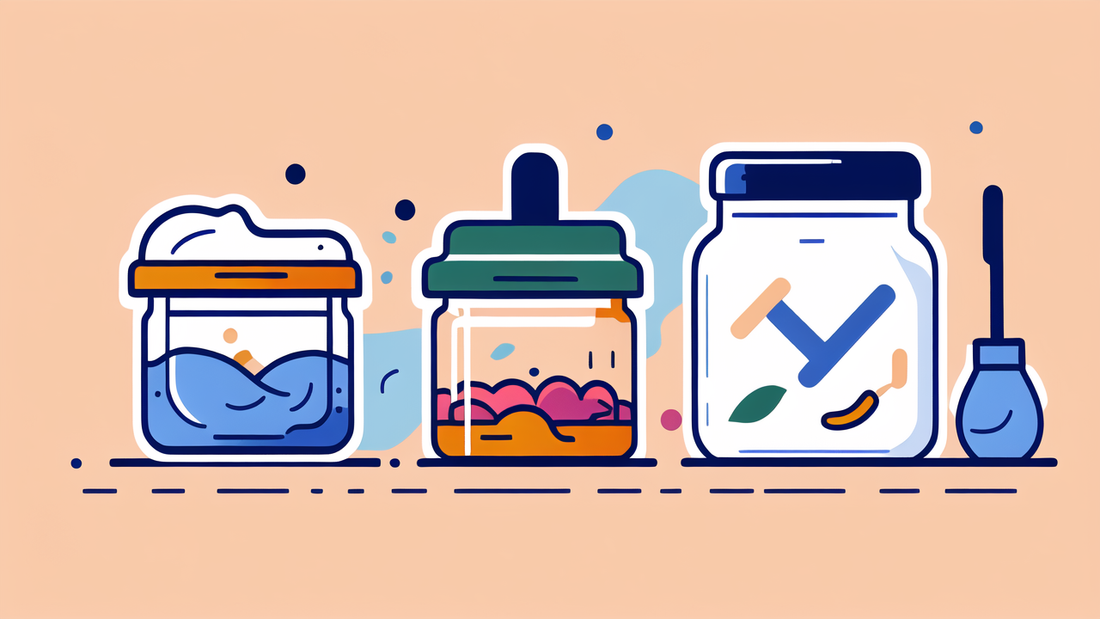
Why Silicone Pacifiers Are the Safe Choice for Your Baby
Understanding Silicone vs. Traditional Pacifiers
The Material Difference
Silicone pacifiers are made from a synthetic material that's durable and safe. Unlike traditional rubber or latex pacifiers, silicone is hypoallergenic. This means it's less likely to cause allergic reactions in babies. Silicone is also more resistant to bacteria growth, making it a cleaner option. It doesn't absorb odors or flavors, keeping it fresh for longer. Traditional pacifiers can break down over time, but silicone remains stable. This stability ensures no harmful chemicals leach into your baby's mouth during use.

Durability and Longevity of Silicone Pacifiers
Silicone pacifiers are known for their long-lasting nature. They can withstand frequent use and cleaning without breaking down. Unlike rubber pacifiers, silicone doesn't crack or tear easily. This durability means you won't need to replace them as often. Silicone pacifiers maintain their shape and integrity even after months of use. They can be boiled for sterilization without losing their form. This longevity makes them a cost-effective choice for parents in the long run.
Eco-Friendly Alternative
Choosing silicone pacifiers is a step towards eco-friendly parenting. They last longer, reducing the need for frequent replacements. This means less waste in landfills compared to traditional pacifiers. Many silicone pacifiers are made from food-grade silicone, which is recyclable. Some brands offer recycling programs for used silicone pacifiers. By choosing silicone, parents can reduce their environmental impact. It's a small change that can make a big difference in reducing plastic waste.
The Health Benefits of Using Silicone Pacifiers
Reducing the Risk of Allergies
Silicone pacifiers are an excellent choice for babies with sensitive skin or allergies. Unlike latex, silicone rarely causes allergic reactions. This makes them safe for most babies, even those with latex sensitivities. Silicone doesn't contain BPA, phthalates, or other harmful chemicals. This reduces the risk of exposure to potentially harmful substances. For parents worried about allergies, silicone pacifiers offer peace of mind. They provide a safe sucking experience without the risk of allergic reactions.

The Impact on Baby's Health and Development
Silicone pacifiers can positively impact a baby's health and development. Their smooth surface is gentle on developing gums and teeth. This can help prevent dental issues that may arise from prolonged pacifier use. Silicone pacifiers are often designed with orthodontic shapes. These shapes support proper oral development as your baby grows. Some studies suggest that pacifier use can reduce the risk of SIDS. Silicone pacifiers offer this benefit without the drawbacks of traditional materials.
How Silicone Pacifiers Support Breastfeeding
Contrary to some beliefs, silicone pacifiers can support breastfeeding when used correctly. Their texture is similar to a mother's nipple, making it easier for babies to switch between breast and pacifier. This can help maintain proper sucking techniques. Silicone pacifiers don't absorb milk or saliva, keeping them cleaner between feedings. This cleanliness reduces the risk of nipple confusion. When introduced at the right time, silicone pacifiers can be a helpful tool for breastfeeding mothers.
Choosing the Right Silicone Pacifier for Your Baby
What to Look for in a Quality Silicone Pacifier
When selecting a silicone pacifier, look for one made from food-grade silicone. This ensures the highest safety standards for your baby. Check for a one-piece design to prevent choking hazards. The shield should be large enough to prevent the baby from putting the entire pacifier in their mouth. Look for ventilation holes in the shield to prevent skin irritation. Choose a pacifier with a ring or handle for easy gripping. Ensure the nipple is the right size and shape for your baby's age and stage of development.

The Different Stages of Baby's Pacifier Needs
Babies' pacifier needs change as they grow. For newborns, choose a small, lightweight pacifier. These are easier for tiny mouths to hold. As your baby grows, move to larger sizes that accommodate their developing mouth. Around 6 months, look for pacifiers that support teething. These often have textured surfaces to soothe sore gums. For older babies, orthodontic shapes become more important. These support proper dental development. Always check the age recommendations on pacifier packaging.
Tips on Buying Silicone Pacifiers Online or Offline
When buying silicone pacifiers, consider purchasing from reputable brands and retailers. Online, read customer reviews and check for safety certifications. Look for pacifiers that meet or exceed safety standards. In stores, inspect the pacifier for any defects before purchasing. Buy multiple pacifiers to have backups on hand. Consider pacifier clips to keep them clean and within reach. Look for sets that include storage cases for hygiene on the go. Don't be swayed by cute designs alone; prioritize safety and functionality. Remember to replace pacifiers every few months or at the first signs of wear and tear.
